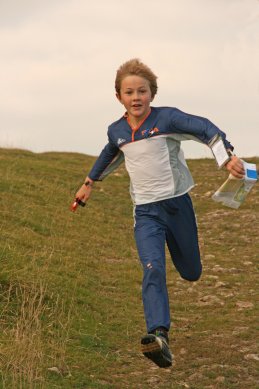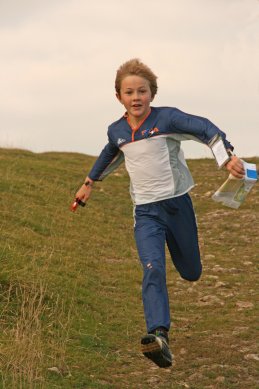
Is running getting a bit dull? Why not try Orienteering? Orienteering combines running with navigation. You will need speed and the cunning to plan the quickest route. But what else is involved?
Experience an Adventure, Try Orienteering!
Orienteering is a challenging outdoor adventure sport that exercises both the mind and the body. The aim is to navigate in sequence between control points marked on a unique orienteering map and decide the best route to complete the course in the quickest time. It does not matter how young, old or fit you are, as you can run, walk or jog the course and progress at your own pace.

Courtesy of the British Orienteering Association
Orienteering can take place anywhere from remote forest and countryside to urban parks and school playgrounds. The most challenging orienteering takes place in areas, which has demanding terrain and few paths.
To start orienteering all you need is a sense of adventure and a pair of trainers. It’s a great sport for runners, joggers and walkers who want to improve their navigation skills or for anyone who loves the outdoors.
Getting Started in Orienteering
A good way to get started would be to try a local permanent orienteering course. These courses can be located in a forest, local town or country park. To find out where your nearest course is, go to the ‘Permanent Courses’ section of the British Orienteering website below.
To experience the full excitement of orienteering you will need to attend an orienteering event, which usually take place on a Sunday morning. Here you will find lots of experienced orienteers who will be able to help you get started.
Types of Orienteering Events
There are many types of orienteering events, including Local, District, Regional, National and Championship events. There are also Night Events, Relays and Score Events. Young children can also take part in string courses where they have their own map and follow a line of string which takes them around a set of controls marked by fun characters. Clubs also have club training, summer evening events, Saturday morning events or come-and-try-it events. These can be a little less frequent than district events depending on how active the club is. All different types of local and district events are ideal for newcomers.
What are the Different Orienteering Colour Coded Courses?
The most common type of event put on by clubs is called a district event which offers a range of courses which vary in length and technical difficulty rating. The courses are colour-coded from White, which is for children, including parents with pushchairs, through to Brown, which is for people who can run at speed over long distances, through tough terrain and are able to navigate at the same time. Courses are graded according to their technical difficulty (TD) and length. The TD scale runs from:
- TD1 = Very easy
- TD5 = Very difficult
White (TD1) White courses are very easy with all controls on paths. They are mainly used by 6-10 year olds and family groups. Length of course 1.0 – 1.5km
Yellow (TD2) Yellow courses use simple linear features like paths, walls and streams. They are mainly used by under 12’s and families. Length of course 1.5 – 2.5km
Orange (TD3) Orange courses progress to basic use of the compass and route choice. They are ideal for novice Orienteers. Length of course 2.5 – 3.5km
Red (TD3) Red courses are technically similar to an orange course. They are used by beginners wanting a longer run. Length of course 3.5 – 7.5km
Light Green (TD4) Light green courses are ideal for improvers as the technical difficulty begins to increase and uses simple contours and ‘point’ features. Length of course 2.5 – 3.5km
Green (TD5) Green courses are technically difficult and use contour and point features. They are used mostly by experienced under 18’s and adults wanting a short but challenging course. Length of course 3.5 – 5.0km
Blue (TD5) Blue courses are technically difficult and are a longer, more physically demanding course in comparison to the green. The distances are also more varied between controls and the course attracts experienced Orienteers. Length of course 5.0 – 7.5km
Brown (TD5) Brown courses are physically demanding and technically difficult. They are designed to challenge experienced orienteers. Length of course 7.5 – 10.0km
Going to an Orienteering Event
Once you have found a suitable event on the fixtures list of the British Orienteering website you need to locate the venue. The grid reference for the event car park will be shown as a hyperlink in the fixtures list. Clicking the link will show you the exact location of the car park through www.streetmap.co.uk. Most events featured in the fixtures list will also provide a link to the organising club’s website where further information can be found.
The directions to an event will often explain how to get to a certain point on a major road, and then tell you to follow the orienteering signs. These are arrows, usually hung from posts or fences, which point the way to the car park. They may say ‘Orienteering’, or ‘O’, or just be marked with the orienteering symbol, which is a square divided into red and white triangles. The car park will often turn out to be a farmer’s field, and may well be off the main road and down narrow lanes. Keep following the arrows until you see marshals who will show you where to park.
Sunday morning district events normally have start times between 10.30am and 12.30pm, with courses closing at 3.30pm, and event entry from 10am until 12pm. There will normally be an enquiries point so if you have any questions, however trivial they may seem, just ask.
What you will need to orienteer
- Comfortable clothes for walking or running in, that you don’t mind getting dirty. Competition rules will normally require full leg cover. You can also buy specially designed orienteering clothes, which offer full body covering but remain lightweight and breathable.
- Trainers or walking shoes, preferably waterproof and with a good grip. There are specially designed orienteering shoes which are studded lightweight running shoes. Prices of these range from £40 – £70.
- A lightweight waterproof, if the weather forecast is poor.
- Money for your entry fee
- A compass is always useful but not strictly necessary if you are orienteering on a White, Yellow or Orange course. You can often buy a compass at the event, if you want one. Starter compasses cost less than £10.
- A safety whistle is sometimes compulsory, especially in difficult terrain, but you can usually buy that too, if you need to.
- A red pen to mark your course on your map and a transparent A4 plastic envelope to put your map in if the maps are not pre-printed. At larger events courses will have already been printed onto the maps so you will not require a red pen for these events.
Orienteering – An adventure sport for all!
All the information you need to start Orienteering is available from the British Orienteering Website.
